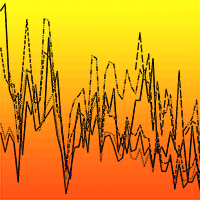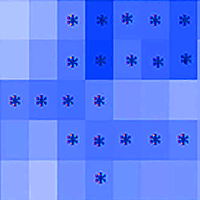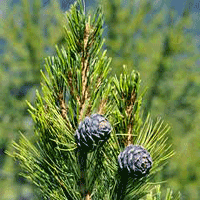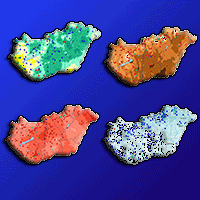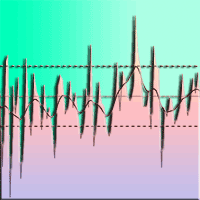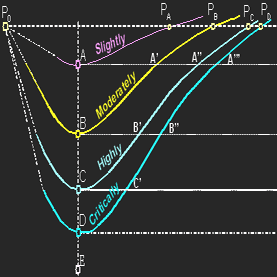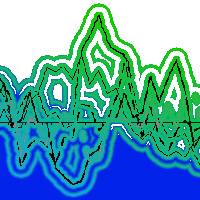
Impact of climate change on radial growth of Siberian spruce and Scots pine in North-western Russia
E Lopatin (1-3) , T Kolström (2), H Spiecker (4)
iForest - Biogeosciences and Forestry, Volume 1, Issue 1, Pages 13-21 (2008)
doi: https://doi.org/10.3832/ifor0447-0010013
Published: Feb 28, 2008 - Copyright © 2008 SISEF
Research Articles
Abstract
When adapting forest management practices to a changing environment, it is very important to understand the response of an unmanaged natural forest to climate change. The method used to identify major climatic factors influencing radial growth of Siberian spruce and Scots pine along a latitudinal gradient in north-western Russia is dendroclimatic analysis. A clear increasing long-term trend was identified in air temperature and precipitation. During the last 20 years, all meteorological stations experienced temperature increases, and 40 years ago precipitation began to increase. This is shown by the radial increment of Siberian spruce and Scots pine. Therefore, climate change could partly explain the increased forest productivity. The total variance explained by temperature varied from 22% to 41% and precipitation from 19% to 38%. The significant climatic parameters for radial increment in Komi Republic were identified, and the relation between temperature and precipitation in explained variance changes over time for Siberian spruce.
Keywords
Climate change, Growth trends, Pinus sylvestris L., Picea obovata Ledeb., Dendrochronology
Authors’ Info
Authors’ address
University of Joensuu, Faculty of Forestry, P.O. Box 111, FI-80101, Joensuu (Finland)
Mekrijärvi Research Station, University of Joensuu, Yliopistontie 4, FI-82900, Ilomantsi (Finland)
Institute of Biology, Komi Scientific Center, Russian Academy of Sciences, Kommunisticheskaya str. 28, 167000, Syktyvkar (Russia)
Institute for Forest Growth, University of Freiburg, Tennenbacherstr. 4, D-79085 Freiburg (Germany)
Corresponding author
Paper Info
Citation
Lopatin E, Kolström T, Spiecker H (2008). Impact of climate change on radial growth of Siberian spruce and Scots pine in North-western Russia. iForest 1: 13-21. - doi: 10.3832/ifor0447-0010013
Paper history
Received: Jan 24, 2008
Accepted: Feb 01, 2008
First online: Feb 28, 2008
Publication Date: Feb 28, 2008
Publication Time: 0.90 months
Copyright Information
© SISEF - The Italian Society of Silviculture and Forest Ecology 2008
Open Access
This article is distributed under the terms of the Creative Commons Attribution-Non Commercial 4.0 International (https://creativecommons.org/licenses/by-nc/4.0/), which permits unrestricted use, distribution, and reproduction in any medium, provided you give appropriate credit to the original author(s) and the source, provide a link to the Creative Commons license, and indicate if changes were made.
Web Metrics
Breakdown by View Type
Article Usage
Total Article Views: 64520
(from publication date up to now)
Breakdown by View Type
HTML Page Views: 52614
Abstract Page Views: 3538
PDF Downloads: 7027
Citation/Reference Downloads: 57
XML Downloads: 1284
Web Metrics
Days since publication: 6502
Overall contacts: 64520
Avg. contacts per week: 69.46
Citation Metrics
Article Citations
Article citations are based on data periodically collected from the Clarivate Web of Science web site
(last update: Mar 2025)
Total number of cites (since 2008): 4
Average cites per year: 0.22
Publication Metrics
by Dimensions ©
Articles citing this article
List of the papers citing this article based on CrossRef Cited-by.
References
Reductions in tree-ring widths of white pine following ozone exposure at Acadia National Park, Maine, USA. Canadian Journal of Forest Research - Revue Canadienne de Recherche Forestiere 27: 361-368.
Gscholar
Time series analysis: Forecasting and control (revised edition). San Francisco, Holden-Day.
Gscholar
A time series analysis approach to tree-ring standardization. University of Arizona, Tucson, pp. 171.
Gscholar
Phytoclimate and ecological factors of increasing productivity of boreal forests in Russian European North. Nauka, Leningrad.
Gscholar
International tree-ring data bank program library manual. Tucson, Arizona, Laboratory of Tree-Ring Research, University of Arizona.
Gscholar
Dendrochronology program library. User’s manual. Tucson, Arizona, USA, Laboratory of Tree-Ring Research, University of Arizona.
Gscholar
Climate Change 2001: The Scientific Basis. Contribution of Working Group I to the Third Assessment Report of the Intergovernmental Panel on Climate Change (Houghton JT, Ding Y, Griggs DJ, Noguer M, van der Linden PJ, Dai X, Maskell K, Johnson CA eds). Cambridge University Press, Cambridge, United Kingdom and New York, NY, USA, pp. 881.
Gscholar
Studier över den avvä derleken orsakade variationen i å rsringsbredderna hos tall och gran i Sverige. 16, 1-279. Rapporter och Uppsatser, Institution for skogsproduction, Skogsh ö gskolan.
Gscholar
Effects of elevated O3 and CO2 on chlorophyll fluorescence and gas exchange in Scots pine during the third growing season. Environmental Pollution 97: 17-27.
Gscholar
Photosynthetic responses of Scots pine to elevated CO2 and nitrogen supply: Results of a branch-in-bag experiment. Tree Physiology 17: 231-240.
Gscholar
Forestry and forest resources of Komi Republic. Dik Publishing House, Moscow, Russia (in russian).
Gscholar
Forests, their exploitation and regeneration. In: Republic of Komi. Komi Publishing House, Syktyvkar, Russia, pp. 34-40.
Gscholar
Reconstruction of past climate from ring-width chronologies of Scots pine (Pinus sylvestris L.) at the northern forest limit in Fennoscandia. University of Joensuu, pp. 7-169.
Gscholar
A reconstruction of mid-summer temperatures from ring-widths of Scots pine since AD 50 in northern Fennoscandia. Geografiska Annaler Series A-Physical Geography 82A: 527-535.
Gscholar
Determination of forest growth trends in Komi Republic (northwestern Russia): combination of tree-ring analysis and remote sensing data. Boreal Environment Research 11: 341-353.
Gscholar
Large-scale climatic variability and radial increment variation of Picea abies (L.) Karst. in central and northern Europe. Trees-Structure and Function 17: 173-184.
Gscholar
Satellite observations of global climate change. Abstracts of Papers of the American Chemical Society 226: U23.
Gscholar
Time-Series Analyses of Tree-Ring Chronologies. Forest Science 32: 349-372.
Gscholar
Permafrost dynamics in the north-east of European Russia at the end of the 20th century. Norwegian Journal of Geography 55: 241-244.
Gscholar
Six- and Three-Hourly Meteorological Observations from 223 USSR Stations. ORNL/CDIAC-66, NDP-048. Carbon Dioxide Information Analysis Center, Oak Ridge National Laboratory, Oak Ridge, Tennessee, USA.
Gscholar
Growth of Norway Spruce (Picea abies (L.) Karst.) under changing environmental conditions in Europe. In: Spruce Monocultures in Central Europe: Problems and Prospects (Klimo E, Hager H, Kulhavy J eds). European Forest Institute. European Forest Institute Proceedings 33, pp. 11-26.
CrossRef | Gscholar
The Global Historical Climatology Network: Long-term monthly temperature, precepitation, sea level pressure and station pressure data. ORNL/CDIAC-53, NDP-041. Carbon Dioxide Information Analysis Center, Oak Ridge National Laboratory, Oak Ridge, Tennessee, USA.
Gscholar
Potential effects of ozone, climate, and spruce budworm on Douglas-fir growth in the Wasatch Mountains. Canadian Journal of Forest Research - Revue Canadienne de Recherche Forestiere 33: 910-921.
Gscholar
General yield tables for normal stands. In: Forest Inventory Handbook, all union rules and regulations for the forest inventory. Kolos, Moscow, pp. 298-231.
Gscholar

